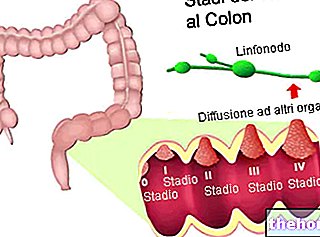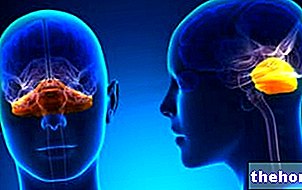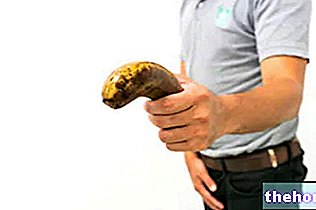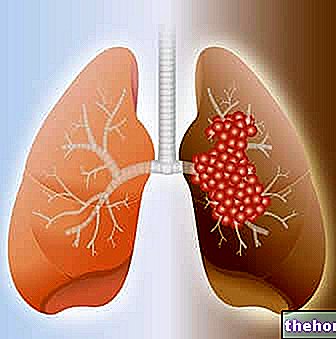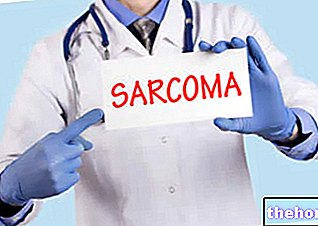Essiac is the name of a supplement, generally a preparation for herbal teas, promoted as a valid natural remedy against cancer and other diseases.
Promotion strategies for "Essiac and other" miraculous "natural remedies
Essiac is the striking example of the many natural products that periodically come to the fore for their "miraculous properties", magnified through:

- books and articles artfully sewn around the product to give it a semblance of scientificity when there is very little scientific (for example, in vitro studies are cited or published in non-peer-reviewed journals, funded by companies or people whose conflict of interest is obvious , failing to mention the studies with contrary results);
- a tradition of millennial use that remotely recalls witchcraft, that is the remedies used by our ancestors against diseases;
- a group of people ready to swear on the effectiveness of the natural product, moving video testimonies etc .;
- massive online advertising campaigns and / or aggressive commercial strategies such as multilevel marketing;
- attempt to create and nurture currents of thought in favor of the use of the product through blogs, websites and social networks; for this purpose the following are used: interventions in discussion groups subsidized by companies or people involved in the product trade; severe moderation of opinions dissidents in blogs, forums and social networks, exploitation of the image of health professionals who have economic interests in extolling the product ...;
- use of "conspiracy theories" that have solid roots in the economic crisis and in the distrust of many towards the system; in short, according to these theories, pharmaceutical lawsuits would blur, or worse boycott, the effectiveness of natural remedies to sell their drugs.
In fact, the Essiac is: a) the subject of pseudoscientific books and articles; b) it exploits the so-called psychology of shamanism (it is said that its inventor, the Canadian nurse Rene Caisse, learned the original formula of Essiac as a remedy used by a tribe of Native Americans); c) in Canada, precisely in Ontario, where the remedy was born and developed around the middle of the last century, there were many people ready to swear to be cured of cancer; d) for all other points, everyone can feed or extinguish their doubts by critically weighing the interventions in the main blogs and forums in the sector. Just looking on the net it is easy to come across an article where a professional A, expert in nutrition therapy, attacks a colleague B guilty of having spoken of Essiac as useless and even harmful according to official medicine, failing to mention the studies that attest to its possible effectiveness, and without providing sufficient evidence to support the danger to health. In short, thanks to the comments of the readers, in the eyes of a NON-expert the article seems a sort of crucifixion of professional B: all talking about pharmaceutical companies and of their huge profits linked to anticancer therapies, to shout at scandal, to point the finger at official medicine, sold doctors, to take on the clothes of the pure, defenders of the people who constantly suffer the oppression of the powerful. Considering that the average reader does not have the necessary technical knowledge to assess whether A or B is right, before leaving such comments he should at least appeal to some common sense and compare, for example, the curricula of the two experts. online information on professional A, it is easy to notice a clear conflict of interest relating to the promotion of the Essiac, being clear his interests in the trade and promotion of the same, as well as books related to it. Obviously this aspect has nothing to do with the effectiveness of the Essiac or the scientific competence of the professional, but it certainly makes us understand how a thriving business revolves around these "miraculous" supplements. Generally, the mistake that many people make is to raise criticisms towards official medicine, naively embracing alternative medicines as pure and ideal only because they attack the dominant health system, whose limitations and defects - typical of the man they are the result of - have inevitably already manifested themselves. The same reasoning is also applied to the other aspects that regulate society, including political thought. Because therefore many readers do not apply the same rigor of thought, used with conventional drugs, towards the " Essiac and other "miracle" natural remedies? The difference is that when you read about new miracle natural products, most readers want to ... believe. We are all looking for well-being and the key to health, especially those who have lost it and have already tried everything to find it ... so we want to believe in what we read. At that moment we do not pay attention, we lower our intellectual defenses and not we are able to understand the logical error of reasoning; we go from one extreme to the other, unaware puppets tossed around in the storm generated by the clash of conflicting economic interests. As long as we are dealing with natural restoratives it is one thing, but when it comes to "anticancer" supplements the moral question and the problem are magnified; about these products means accepting the fact that someone could abandon conventional therapies (which, albeit with their limitations, maintain a "more or less broad effectiveness depending on the case) to embrace an alternative therapy without scientific efficacy, with all the consequences of the case . Not to mention the risk of drug interactions and fueling the distrust of official medicine, which despite its limitations has nevertheless contributed to doubling the average life span of the human being in just over a century.
Property of the Essiac
Composition
After the necessary introductory digression, let's move on to the "scientific analysis of" Essiac. First of all, its composition is not perfectly standardized and this creates problems of applying the studies from one product to another. In any case, Essiac, whose formulation (like any "self-respecting magic potion") has remained secret for many years, is a mixture of wild herbs (common in North America), generally: sorrel, inner skin of slimy elm, burdock and Indian rhubarb roots (Rheum palmatum, Rumex acetosa, Ulmus fulva, Arctium lappa).
More on the alleged plots of pharmaceutical companies
For those who chew a little on the topic of "natural remedies", it is useless to repeat that even in this case there are no certain proofs of efficacy and reliable documentation; moreover, the boycott theory of pharmaceutical companies does not stand up: it is true that these companies seek profit, they would not exist without it, but precisely for this reason if Essiac had proven to cure cancer they would have taken over the business for some time. Although, being a blend of herbs, Essiac is not the most suitable example, it is good to remember that natural extracts cannot be patented; despite this, it is enough to make small chemical changes (even a single atom) on the structure. of the characterizing active ingredient, demonstrate that the additional benefits outweigh the risks, and the patent becomes applicable. Therefore it does not hold up the conspiracy theory according to which pharmaceutical companies boycott natural remedies for profit reasons: most drugs derive from natural substances, therefore precisely because they are looking for profit, pharmaceutical companies are very careful about what nature offers us.
Property of the Essiac
The claims used for the commercial promotion of Essiac paint it as a valid remedy for: strengthening the immune system, improving the state of well-being, reducing pain, increasing appetite, reducing the volume of tumors and increasing survival. To this are often added antioxidant, detoxifying / purifying, anti-inflammatory, energizing and rebalancing properties of the digestive functions.
How to use
Under the term Essiac, supplements are marketed in solid form, in the form of herbal tea preparations, or liquid: the dosage, composition and method of use vary from company to company. Generally it is recommended to use them in the form of herbal tea prepared with water (some recommend it minimally mineralized, avoiding tap water), leaving a teaspoon of mixture in infusion or decoction for a few minutes; it is recommended to take it on an empty stomach two hours before or after meals, for a period of at least one or two years.
Does Essiac cure cancer?
A review1 of the literature on Essiac and related formulations clearly shows the absence of quality clinical studies to support its traditional uses. attributing anti-cancer properties to the Essiac (... but as happens in these cases they are sufficient to fuel the need for further experimentation, which presumably will make the remedy survive from a commercial point of view for several years; as if to say that history will repeat itself as for other natural products until the consumer changes). For the avoidance of doubt, it should be noted that the scientific weight of the few studies that report the spontaneous recovery of patients treated with Essiac5,8 is considerably reduced by the possibility, founded and statistically characterized, that a small part of patients undergo spontaneous recovery from the disease. . Not to mention the placebo effect.
Returning to the studies, what has been demonstrated for the Essiac inside a test tube has not found sufficient confirmation, neither in vitro2 nor in vivo3. Indeed, one study also obtained opposite effects9 (Essiac stimulated the growth of breast cancer cells in the cellular models studied). The ability to improve the quality of life of cancer patients also seems unfounded, specifically women with breast cancer 4.
The position of the world's major cancer foundations, such as the American Cancer Society, leaves no room for interpretative doubts: the available scientific evidence DOES NOT support the use of Essiac for the treatment of cancer in humans.
Safety of use and side effects
There are also many shadows on these aspects, in the sense that due to the scarce amount of studies and the different formulations marketed under the name "Essiac", the absence of side effects cannot be excluded. As mentioned, the authors of a study9 conclude whereas Essiac can stimulate the growth of breast cancer cells in vitro; this, as we have seen, does not have a great scientific weight and demonstrates how in these "test-tube" studies we often end up proving the opposite of everything.
Bibliography
- J Soc Integr Oncol. 2009 Spring; 7: 73-80. Essiac: systematic review by the natural standard research collaboration. Ulbricht C, Weissner W, Hashmi S, Rae Abrams T, Dacey C, Giese N, Hammerness P, Hackman DA, Kim J, Nealon A, Voloshin R.
- Anticancer Res. 2006 Jul-Aug; 26 (4B): 3057-63. An in vivo analysis of the herbal compound Essiac. - Leonard BJ, Kennedy DA, Cheng FC, Chang KK, Seely D, Mills E.
- Nutr Cancer. 2007; 58: 188-96. Evaluation of the antiproliferative effects of Essiac on in vitro and in vivo models of prostate cancer compared to paclitaxel. Eberding A, Madera C, Xie S, Wood CA, Brown PN, Guns ES.
- J Altern Complement Med. 2006 Dec; 12: 971-80. Trial of Essiac to ascertain its effect in women with breast cancer (TEA-BC). Zick SM, Sen A, Feng Y, Green J, Olatunde S, Boon H.
- Can J Urol. 2005 Oct; 12: 2841-2. Remission of hormone-refractory prostate cancer attributed to Essiac. Al-Sukhni W, Grunbaum A, Fleshner N.
- J Altern Complement Med. 2004 Aug; 10: 687-91. Inhibition of prostate cancer-cell proliferation by Essiac. Ottenweller J, Putt K, Blumenthal EJ, Dhawale S, Dhawale SW.
- Anticancer Res. 2007 Nov-Dec; 27 (6B): 3875-82. In vitro analysis of the herbal compound Essiac. Seely D, Kennedy DA, Myers SP, Cheras PA, Lin D, Li R, Cattley T, Brent PA, Mills E, Leonard BJ.
- Curr Oncol. 2009 Aug; 16: 67-70. Regression of follicular lymphoma with Devil "s Claw: coincidence or causation? Wilson KS.
- Essiac and Flor-Essence herbal tonics stimulate the in vitro growth of human breast cancer cells. Kulp KS, et al. - Breast Cancer Res Treat. 2006 Aug; 98: 249-59. Epub 2006 Mar 16.
Select plant Fir Acacia Acerola Sorrel Yarrow Yarrow Yarrow Aconito Adatoda Garlic Agnocasto Agrimonia Alchemilla Alkekengi Aloe Altea Witch Hazel Ammi or Visnaga Pineapple Andrographis Anemone Pulsatilla Angelica Anise Star Anise Japanese Star Anise Bitter Orange Bitter Areca Arnica Harpagophytum Arpagophyte Artemisia Asteragus Basil Asparagus Asparagus Peruvian Asparagus Asparagus Asparagus Hawthorn Boldo Borage Shepherd's Purse Boswellia Bucco Butea superba Cocoa Coffee Cajeput Calamus Calamus Marigold Camedrio Chamomile Roman Chamomile Camphor Cinnamon Ceylon Maidenhair Capuchin Artichoke Cardamom Cardiac Thistle Asian Thistle Carvi Cascara Cassia Catecu Catha Cabbage Celandine Chicory Centaurea Cinnamon Cypress Celandine Chives Cypress Coca Cola Colchico Combreto Condurango Comfrey Coriander Cranberry Barberry American Chrysanthemum Cumin Turmeric Damiana Digital Dioscorea Drosera Dulcamara Dunalilella Echinacea Eder a Ephedra Elenio Eleutherococcus Helichrysum Evening primrose Horsetail Alfalfa Erica Euphrasia Erisimo Escolzia Eucalyptus Farfara Farfaraccio Calabar bean Fenugreek Fennel Phytolacca Frangola Ash Fumaria Japanese Mushrooms Galega Ganoderma lucidum Garcinia Cambogia Mulberry Gentian Broom Ginkgo Ginkgo Guipana Guipana Gynestra Ginkgo Hibelia Gymnasium Hibiscus Guarulp St. John's Wort Horse Chestnut Ispaghul Hyssop Jaborandi Kava kava Konjac Laminaria Cherry Laurel Lavender Lemongrass Lespedeza Lovage Icelandic Lichen Lemon Flax Lippia Licorice Lobelia Hops Maca Marjoram Maize Mallow Manna Marrubio Marrubio d "water Matè Melaleuca Meliloto American Lemon balm Myrtle Myrama Walnut Nutmeg Walnut vomica Olive tree Meadowsweet Ononide Opuntia Oregano Orthosiphon Nettle Poppy Papaya Parietaria Feverfew Passiflora Chilli Perilla Periwinkle Phyllanthus Plantain Picrorhiza Pilosella Pino Pisci dia Podofillo Polygala Grapefruit Parsley Psyllium Pueraria mirifica Butcher's broom Pygeum Quassia Oak Rhubarb Ratania Rauwolfia currant Castor bean Rhodiola Rosehip Rosemary Rue Willow Sarsaparilla Sage Elderberry Sassafras Sedum Ergot Senna Serenoa Repens Soybean Solidago Tansy Taraxus Tamarind Tamarind Tamarind Tamarind Tamarindo Ursina Valerian Vanilla Mullein Verbena Veronica Viburnum Vinca Pansy Mistletoe Vine Withania Yohimbe Saffron Ginger Pumpkin Select disease Juvenile Acne Rosacea Tinnitus Tinnitus Aerophagia Tendon Affections Afonia Aphthae Algias Functional Halitosis Breastfeeding Allergy Anemia Anguish Anxiety Arteriosclerosis Asthrosis Asthrosis Arthritis Arthritis Men Sex Woman Blepharitis and Conjunctivitis Eye bags Bronchitis Gallstones Kidney stones Salivary stones Baldness Androgenetic Candida Fragile hair Caries Headache Cellulitis Motion sickness Cystitis C limaterio Cholecystopathy High cholesterol Ulcerative colitis Colonoscopy Bruises Hematoma Convalescence Couperose Depression DermatitisDiaper Dermatitis Diabetes Diarrhea Erectile Dysfunction Dyslipidemia Dysmenorrhea Dyspepsia Vision Disorders Hemorrhoids Epistaxis Cardiac Erethism Fever Fibromyalgia Flatulence Phlebitis Gastritis Chilblains Gingivitis Herpes Lack of appetite Urinary infections Influenza Insomnia Hypersomnia Hypertension Hypertension Hypertension Laryngitis Hypertia Mononucleosis Alzheimer's disease Crohn's disease Nausea Vomiting Obesity Dark circles Onychomycosis Osteoporosis Dry skin Periarthritis Piorea Low blood pressure Prostatitis Psoriasis Colds Breast fissures Anal fissures Gastroesophageal reflux Nasopharyngitis Wrinkles (abdominal fat) Salmonella Sinus syndrome Smashing Premenstrual pain Cough High triglycerides Ulcer Burns Fragile nails Hot flashes Warts Dizziness Herbal properties Abortive tanning Adaptogens Afrod Isiac bittering analgesic anesthetic anorectics analgesic antacid anti-allergic anti-asthmatic Antibiotic catarrh Anticellulitiche anticonvulsant Antidiaforetiche antidiarrheal edematous anthelmintic antiemetic Antiemorroidarie antiphlogistic Antiidrotiche Antinevrotiche Antioxidants antipyretic antirheumatic antiscorbutic Antiseptic antispasmodic anti-uric Aperitive Flavoring Astringent Balsamic Bechiche Capillarotrope cardiotonic Carminative Cathartic caustics Cicatrizant cholagogue choleretic Dyes Decongestants Deodorants purifying Detergents diaphoretic Disinfectants Detox Thirst quenchers Diuretics Exciting Emetics Emmenagoghe Emollients Hemostatic Energy Hepatoprotective Expectorants Eupepticics Photosensitizers Galactophores Galactofuges Galactogae Moisturisers Immunostimulants Hypertensive Hypnotic Hypoglycemic Hypotensive Irritants Laxatives Soothing Narcotic Narcotic i Revulsive Purgatives Remineralizing Refreshing Rubefacants Sedative Soporific Sneezing Stomachic Stomatics Narcotic Tenifuges Tonic Vasoconstrictors Vasodilators Vermifuges Vescicators Vitaminics Vulneraries

